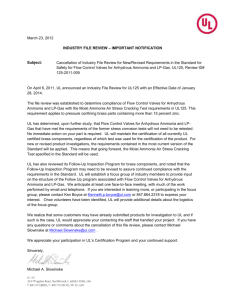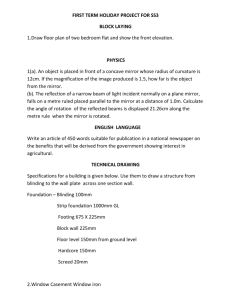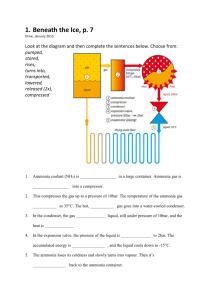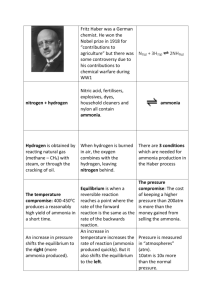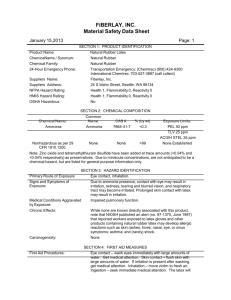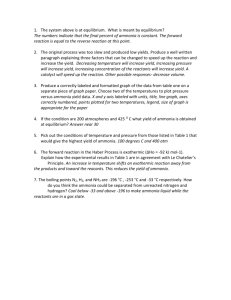Breaking News
advertisement
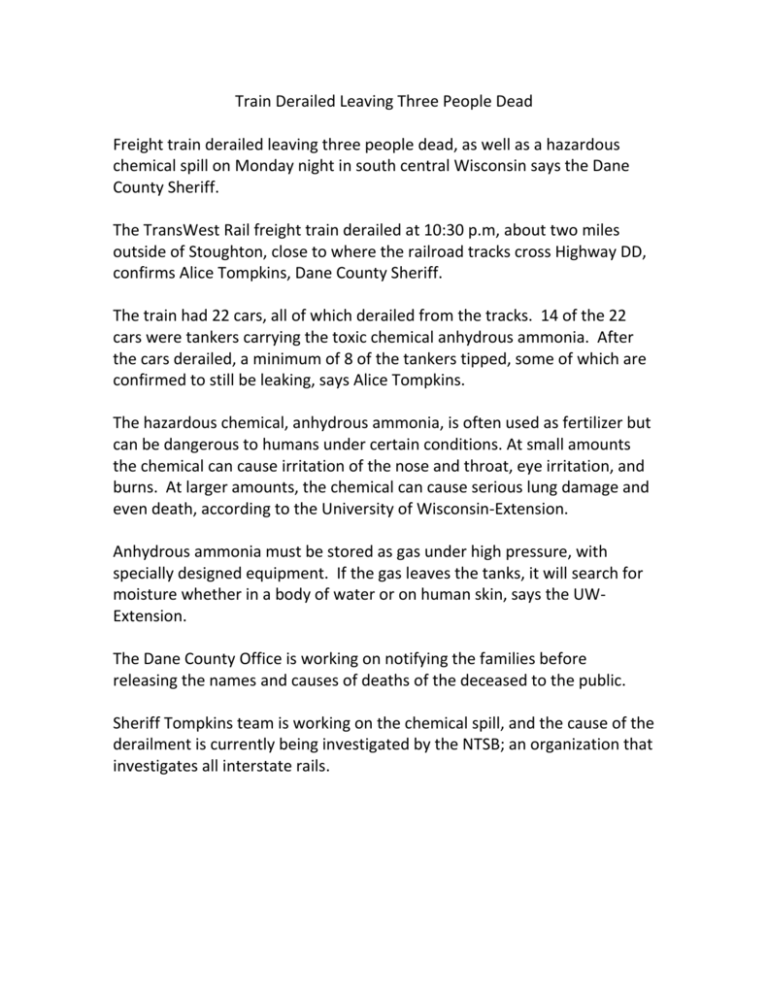
Train Derailed Leaving Three People Dead Freight train derailed leaving three people dead, as well as a hazardous chemical spill on Monday night in south central Wisconsin says the Dane County Sheriff. The TransWest Rail freight train derailed at 10:30 p.m, about two miles outside of Stoughton, close to where the railroad tracks cross Highway DD, confirms Alice Tompkins, Dane County Sheriff. The train had 22 cars, all of which derailed from the tracks. 14 of the 22 cars were tankers carrying the toxic chemical anhydrous ammonia. After the cars derailed, a minimum of 8 of the tankers tipped, some of which are confirmed to still be leaking, says Alice Tompkins. The hazardous chemical, anhydrous ammonia, is often used as fertilizer but can be dangerous to humans under certain conditions. At small amounts the chemical can cause irritation of the nose and throat, eye irritation, and burns. At larger amounts, the chemical can cause serious lung damage and even death, according to the University of Wisconsin-Extension. Anhydrous ammonia must be stored as gas under high pressure, with specially designed equipment. If the gas leaves the tanks, it will search for moisture whether in a body of water or on human skin, says the UWExtension. The Dane County Office is working on notifying the families before releasing the names and causes of deaths of the deceased to the public. Sheriff Tompkins team is working on the chemical spill, and the cause of the derailment is currently being investigated by the NTSB; an organization that investigates all interstate rails. Remember that you may use all facts included in previous assignments, but you may not research additional information or make up information unless instructed to do so) Transcript of impromptu press conference with Dane County Sheriff Alice Tompkins and seven reporters gathered at one of the roadblocks outside the derailment site, 11:15 p.m. Monday Alice Tompkins: I will take a few very brief questions. Reginald McBrush will send a more detailed update overnight, as we have more information. Here is what we know. It was a TransWest Rail freight train. It derailed two miles outside Stoughton, just after the spot where the tracks cross Highway DD. It was 10:30 p.m. tonight, Monday. We do not know what made it derail. They had 22 cars and 14 were those tanker kind of cars that carry liquid and gas. Those 14 had anhydrous ammonia in them. All of the cars left the tracks. A bunch of them tipped, but we know a minimum of 8 of the tankers definitely did tip and some of them are leaking. We don’t know how much has leaked out already but it does look like they’re still leaking. My haz mat team, and the one from Madison, are working on it right now. We have three people killed. I can’t tell you anything about the ammonia itself. I’m not an expert. This is a very difficult situation for all involved. Reporter: What information can you give us about the victims? AT: We are still working on notifying families, so I cannot tell you their names, how they died or how they came to be involved in this, like whether they were on the train or anything. That’s going to come in time, but I have to be respectful here. Reporter: Were they all killed in the derailment or are we talking about the ammonia? AT: Didn’t I just get done telling you I wasn’t going to talk about that? Reporter: What’s this ammonia used for? AT: I know it’s a fertilizer for farming, but that’s about all I know. You’ll need other folks for that. Reporter: But this is a toxic substance? AT: Yes, I do know that it’s hazardous material. My understanding is that it causes burns when it comes in contact with moisture. So if you get it in your eyes, it burns your eyes. If there’s enough of it, people can’t breathe. Reporter: How much ammonia spilled? AT: We don’t know. Reporter: But you believe it is continuing to leak? AT: Yes. Reporter: Is this a liquid or a gas that is leaking? AT: It’s transported as a gas under heavy pressure. When it leaks, it looks for moisture, whether that’s on a person’s skin or in a river. If it hits skin, it burns. If it combines with a body of water, my understanding is that it’s then considered a liquid form. But don’t quote me on that. I’m no expert. Reporter: Does this area have bodies of water in it? What are they? AT: We have a marsh just east of the derailment site. Penny Lake and two ponds are nearby. I know one is Kurt Pond. I can’t remember the name of the other. I know teams are looking at all that but they haven’t confirmed anything to me about whether the water has been affected. Reporter: Any idea what caused the derailment? AT: I’m not going to speculate on that. We have no immediate known cause, so this will require much more investigation. The NTSB is on its way here right now. They investigate all interstate rail. E-mail from Dane County Sheriff’s Office Public Affairs Officer Reginald McBrush, 10:50 p.m. This is to confirm that a TransWest Railroad train has derailed just outside Stoughton (about two miles) in Dane County. We do not know the number of cars involved. This occurred at 10:32 p.m. Monday. The derailment is located just beyond the track crossing at County Highway DD. Sheriff’s officers have responded to the scene, along with officers from the Stoughton, McFarland, Cottage Grove, Oregon, Monona and Madison police departments. Fire crews from all of these locations are en route or have arrived, as well. The Dane County and Madison Hazardous Materials teams responded. At least one of the TransWest cars has spilled anhydrous ammonia, which the Haz Mat teams will address. I will send updates as necessary. The scene is closed to the public, including media, because of the chemical spill. Reporters and photographers will not be allowed past a twomile perimeter surrounding the scene. The air space over the crash also is restricted due to chemicals, so photography or videography by helicopter is not possible. We do not yet know about injuries. I will not have comment on any of these matters before my next email update. Ammonia Entry from Wikipedia: http://en.wikipedia.org/wiki/Ammonia Anhydrous Ammonia Information from University of Wisconsin - Extension, operator of education programs serving state residents and industries Anhydrous ammonia is an efficient and widely used source of nitrogen fertilizer. Anhydrous ammonia has several advantages, including its relatively easy application and ready availability. However, there are also disadvantages and potential dangers involved in handling anhydrous ammonia. It must be stored and handled under high pressure, requiring specially designed and well-maintained equipment. In addition, to ensure their safety, workers must be adequately educated about the procedures and personal protective equipment required to safely handle this product. What is anhydrous ammonia, and why is it so risky to handle? It is a chemical made up of one part nitrogen and three parts hydrogen. The properties of this fertilizer make it one of the most potentially dangerous chemicals used in agriculture. Ammonia gas is colorless and has a sharp, penetrating odor. When used as an agricultural fertilizer, it is compressed into a liquid. In the liquid state, it is stored in specially designed tanks strong enough to withstand internal pressures of at least 250 pounds per square inch (psi). If a hose ruptures or a valve is unintentionally opened, the high pressure from the tank can cause ammonia to spray into your eyes, face, and other parts of your body before you can react. When pressure is released, liquid anhydrous ammonia quickly converts to a gas. To protect yourself and other workers, you must be aware of the hazardous properties of anhydrous ammonia. The word “anhydrous” means without water. Consequently, when anhydrous ammonia comes in contact with any moisture, the water and ammonia rapidly combine. When injected into the soil, the liquid ammonia expands into a gas and is readily absorbed in the soil moisture. Similarly, in contact with your eyes, skin, or mucous membranes, ammonia will cause rapid dehydration and severe burns as it combines with the moisture of the body. Anhydrous ammonia boils at minus 28°F. It must be kept under pressure to be stored as a liquid above this temperature. Thus, when liquid ammonia strikes the skin, it can instantly freeze exposed tissue. Anhydrous ammonia is caustic and causes severe chemical burns. Body tissues that contain a high percentage of water, such as the eyes, skin and respiratory tract, are very easily burned. Victims exposed to even small amounts of ammonia require immediate treatment with large quantities of water to minimize the damage. Ammonia is also corrosive to certain metals, such as copper and zinc, and their alloys. Galvanized pipe must not be used for storing or applying ammonia because it contains zinc. Containers should be made of special high-strength steel or other approved material. Table 1. Exposure Levels and The Human Body. Exposure Effect on the Body (ppm) 50 ppm Detectable by most people 134 ppm 700 ppm 1,700 ppm 2,000 ppm 5,000 ppm Irritation of nose and throat Coughing, severe eye irritation, may lead to loss of sight Serious lung damage, death unless treated Skin blisters and burns within seconds Suffocation within minutes Permissible Exposure No injury from prolonged or repeated exposure Eight hours maximum exposure One hour maximum exposure No exposure permissible No exposure permissible No exposure permissible Exposure Levels and Wildlife Ammonia even at dilute concentrations is highly toxic to aquatic animals, so it is classified as “dangerous for the environment” by the EPA. Lead: give a summary lead of what happened 2nd paragraph: elaborate the details of the lead. Give the time of accident, name the highway, the city, the river, and attribute. List the number of vehicles 3rd paragraph: explain the circumstances of the five dead 4th paragraph: explain the dangers of acetic anhydride 5th paragraph: conclude
